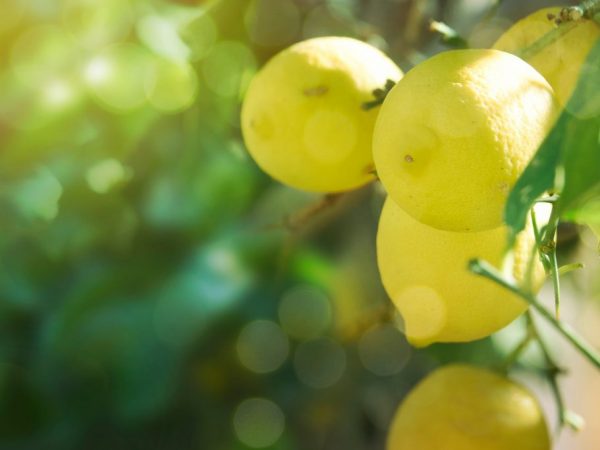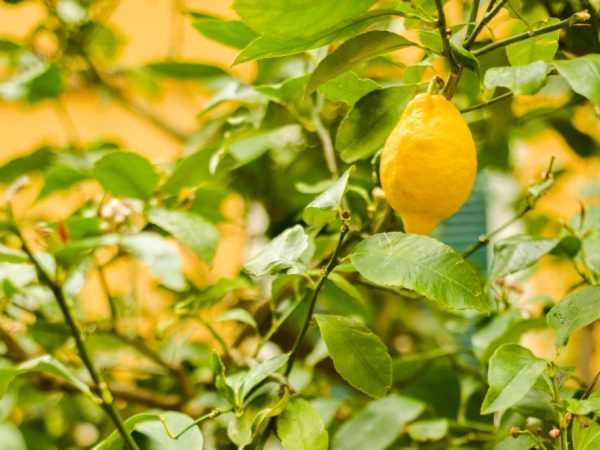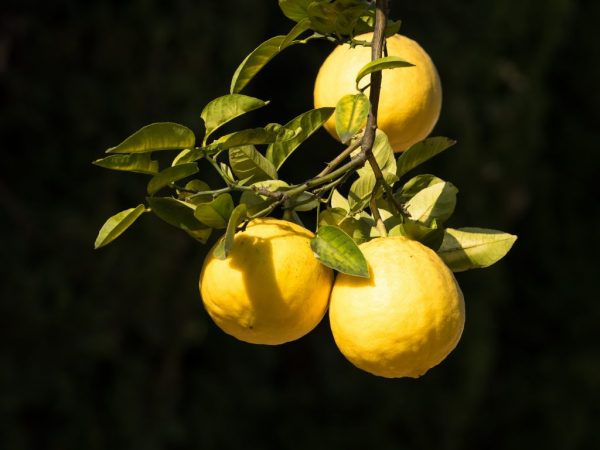Description of varieties of lemons
The first varieties of lemon appeared in India, for growing in nature it needs a warm subtropical climate. The popularity of the fruit has forced breeders to create new varieties. Their quantity and variety makes it possible to cultivate this representative of citrus fruits in any climatic conditions.

Description of varieties of lemons
Characteristics of culture
Of all citrus fruits, lemon is the least demanding on temperature conditions. The most favorable growing temperature for him is up to 22. Prefers moist soil. Like all citrus fruits, he loves light, but he also has enough penumbra for active growth.
You can grow citrus in the following form:
- in the open field;
- creeping;
- trench;
- indoor.
The types of lemon crops are divided into two groups:
- tree-like - tall trees reach a height of 6 m, fruits are formed inside a dense crown;
- bushy - small bushes up to 4 m tall, fewer leaves, fruits ripen at the ends of branches.
Lemon cultivars in open ground in subtropical conditions are characterized by rapid growth and good yields. The most favorable conditions for growing stumbling lemon are the lands of Azerbaijan. Trench lemon varieties continue to be grown in Uzbekistan and Tajikistan.
In the climatic conditions of Russia, it will be possible to grow only indoor lemon. It is possible to grow this fruit at home in a winter garden or near a window in an apartment.
Lemon varieties
The most popular varieties of lemons are undersized and medium-sized. Indoor lemon varieties are numerous - about 150 houseplants.
Pavlovsky
Fruits well throughout the year, unpretentious to lack of light and moisture.
According to the description of the variety, the tree reaches a height of 2 m, the crown is compact, in the shape of a ball. Leaves are dark green, dense, with a smooth and shiny surface. Leaf shape is oval or oblong. 1 p. in 2-3 years old leaves fall off and new ones appear. In the period of fruiting, it begins at 3 or 4 years of life.
They get 20-40 fruits a year. The culture undergoes 3 periods of active growth per year. Taste qualities are excellent, surpassing those grown in the open field in the south by some criteria. Fruits are oblong, up to 10 cm in length, weighing up to 150 g, have a pleasant sweet and sour taste.
Together with the pulp, a sweetish peel is used for food. It is better to place the plant on the east side, protect it from direct sunlight, optimal humidity conditions are 60 - 80%, likes frequent spraying of the crown.
Genoa
The tree looks thin, but it is very productive. At the 4th year of life, it gives the first harvest - more than 50 fruits in indoor conditions, up to 150 are harvested on plantations. The crown is dense, compact, practically does not require formation. The trunk is not covered with thorns.

The variety is valued for its good taste.
Large fruits of an oblong shape, with a pointed end at the top and a ribbed strip at the base. It is appreciated for its taste.The tender, juicy pulp has a pleasant taste, the peel is edible.
The disadvantage is the difficult separation of the peel from the pulp and the presence of thin membranes inside the fruit. The leaves are large, ovoid, green in color. Has an increased demand for light, it is better to place it on the south side of the room.
Meyer
Suitable for indoor cultivation, due to its low growth, compact crown. Refers to early, frost-resistant varieties. It does not die at -10 ° С.
Another name for the species is Chinese dwarf. The tree is decorative, there are almost no thorns, the foliage is dense.
The leaves are dense and jagged at the ends, and have an aroma of essential citrus oil. In winter, sheds leaves. With an increase in daylight hours, the foliage is restored.
Fruits are small, weighing up to 120 g, round, yellow-orange in color. There are many of them on the tree. The peel is devoid of tuberosity, it is easily separated from the juicy pulp. The taste is unusual; well-ripened sweet fruits have a slight hint of bitterness. The disadvantage is poor keeping quality, so the fruits are picked unripe, they ripen on the road.
Novogruzinsky
This high-yielding citrus in indoor conditions is 2 m in height. The crown is wide, the leaves are light green, oblong in shape. The tree feels better on the east side of the room.
Fruits are elongated oval. The sour pulp is rich in juice with a high content of vitamin C, the zest is shiny, aromatic, thickened. Novogruzinsky lemon is an unpretentious variety that does not require a lot of moisture.
Panderosa
Lemon of the Panderoza variety belongs to medium-sized plants. An artificially formed crown will give it a decorative look. For fruit ovary, excess flowers must be removed before full disclosure. Ficus-like leaves. The plant blooms profusely and beautifully.
Easily tolerates high temperatures with sufficient moisture. Breeders advise placing a container of water next to it. Needs regular feeding. The first fruits are received already in the second year of life.

Sweet Panderoza fruits
With proper care, they reach 1 kg in weight. The shape is round, sometimes pear-shaped. The peel is dense, about 1 cm. A characteristic feature of this representative of the sweet lemons variety is the non-lemon taste, not sour pulp, since the fruits contain little citric acid.
Lisbon
A vigorous tree native to Australia. It tolerates high and low temperatures well, and is resistant to drought. Begins to bear fruit at the age of 2, and it can give up to 60 fruits a year.
The leaves are large, dense, wide, dark green in color. They have a bright, specific smell. Fruits are oblong-oval, orange, with a beveled top. The pulp contains no seeds. The thin, sweet peel is edible.
Rough-skinned
This citrus grows well at home. Easily tolerates dry indoor air. Ripening is long, only at 3-4 years of life it blooms for the first time. The low yield is compensated by the weight of the fruit, which reaches 1 kg.
Leaves are lanceolate with jagged edges. Round fruits have a blunt, well-defined apex and wrinkles near the stalk. Light green pulp, sour taste. The coarse warty peel is up to 1 cm thick.
Lunario
This lemon as an Italian new variety got its name for the peculiarity of blooming every season during the new moon. The tree reaches a maximum height of 1.5 m, and there are many small thorns on the bark.
Leaves are dark green, wide. It is appreciated for its visual appeal, unpretentious care and high yield. The fruits are oblong, ovoid, with a bright yellow rind. The greenish-yellow pulp is slightly juicy, with a sour taste, contains seeds.
Eureka Variegata
Eureka Variegata is a variegated lemon, therefore it is more sensitive to cold, the life span is short. It bears fruit for almost a whole year. The tree is medium in size, spreading, without thorns. The fruits are oblong, often surrounded by a groove.The pulp is juicy, yellow in color, turns orange when ripe.
Other varieties of lemons
Bitter Abkhaz and Turkish varieties of lemons continue to be popular.
In addition to the traditional ones, lesser-known varieties of lemons are beginning to attract attention:
- Lawrence.
- Lara.
- Darrell.
- Genoa.
- Eureka.
- Joshua.
- Cognac Portuguese.
- Citrine.
- a kind of lemon Kumquat.
- Italian Florentina.
- variegated Sanguineum.
- Pink.
- New Zealand.
Conclusion
Lemon varieties are surprising in their variety. Varieties of lemon varieties make it possible to choose the most suitable option for growing. First of all, you need to decide what requirements are imposed on the future plant: decorativeness of the species, a certain taste, size restrictions, fruiting regime, the ability to withstand a certain temperature regime, tree care conditions.
Whatever the choice, patience, attention and desire to grow lemons will help you cope with any difficulties, and the process itself will become a pleasant experience.


